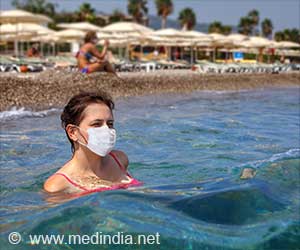COVID-19 cases are rising again in the US this summer. Experts explain why summer surges happen and offer safety tips to protect yourself and your family.
- COVID-19 cases and hospitalizations are rising across several US states
- Experts link summer surges to travel, waning immunity, and indoor gatherings
- Updated vaccines and basic precautions remain crucial for protection
As temperatures rise, so do COVID-19 cases. According to the Centers for Disease Control and Prevention (CDC), the U.S. is currently experiencing a summer surge in infections, with cases increasing in at least 25 states, particularly in hotspots like California, Texas, and Florida. This uptick marks the return of a now-familiar biannual COVID-19 wave pattern driven by declining immunity, indoor activity, and emerging variants (1✔ ✔Trusted Source
Why is COVID-19 rising in summer?
).
Advertisement
Meet ‘Nimbus’: The Summer Variant with a Razor-Throat
Leading this wave is the NB.1.8.1 strain, nicknamed the “Nimbus” variant. First detected in March 2025, it has become the dominant strain across nearly half the U.S., notable for its high transmissibility and a distinctive symptom—a sore, razor-blade-like throat.
Though the strain isn’t linked to more severe disease, its rapid spread has raised alarms. Wastewater data from the CDC reveals elevated SARS-CoV-2 levels in 95% of testing sites in California, with alerts shifting from low to medium.
Other Omicron-descendant variants, such as XFG, LP.8.1, and KP.3.1.1, are also present in rising proportions, prominently appearing in wastewater samples and contributing to the summer wave.
Advertisement
Why COVID Spikes Every Summer: Key Factors
Experts point to several reasons behind the seasonal resurgence:
- Waning protection: Immunity from past infections and vaccinations begins to decline by mid-to-late summer, leaving people vulnerable to new variants.
- Indoor exposure: Heat drives people indoors, where air conditioning reduces ventilation, raising the risk of airborne transmission.
- Dry indoor air: Air conditioning creates dry conditions that keep virus particles suspended in the air longer.
- Social gatherings: Travel, barbecues, concerts, and holidays like the Fourth of July result in dense indoor gatherings, increasing the risk of spread.
This summer-winter biannual pattern of COVID-19 transmission has been observed since 2020, shaped by behavioral trends and viral evolution.
COVID by the Numbers: What the Latest Data Reveals
Though hospitalizations and deaths remain lower than in past peaks, emergency visits, especially among young children, are rising. The virus’s circulation is widespread, though symptoms for most remain mild to moderate.
Summer Safety Tips: Protect Yourself from COVID
While the virus continues to adapt, experts emphasize layered prevention strategies to reduce risk:
- Vaccination and Boosters: Stay up to date, especially if your last dose was more than six months ago. Fall 2025 vaccines targeting new variants are expected, but don’t delay current…
Disclaimer
We strive to uphold the highest ethical standards in all of our reporting and coverage. We 5guruayurveda.com want to be transparent with our readers about any potential conflicts of interest that may arise in our work. It’s possible that some of the investors we feature may have connections to other businesses, including competitors or companies we write about. However, we want to assure our readers that this will not have any impact on the integrity or impartiality of our reporting. We are committed to delivering accurate, unbiased news and information to our audience, and we will continue to uphold our ethics and principles in all of our work. Thank you for your trust and support.
Website Upgradation is going on. For any glitch kindly connect at 5guruayurveda.com



